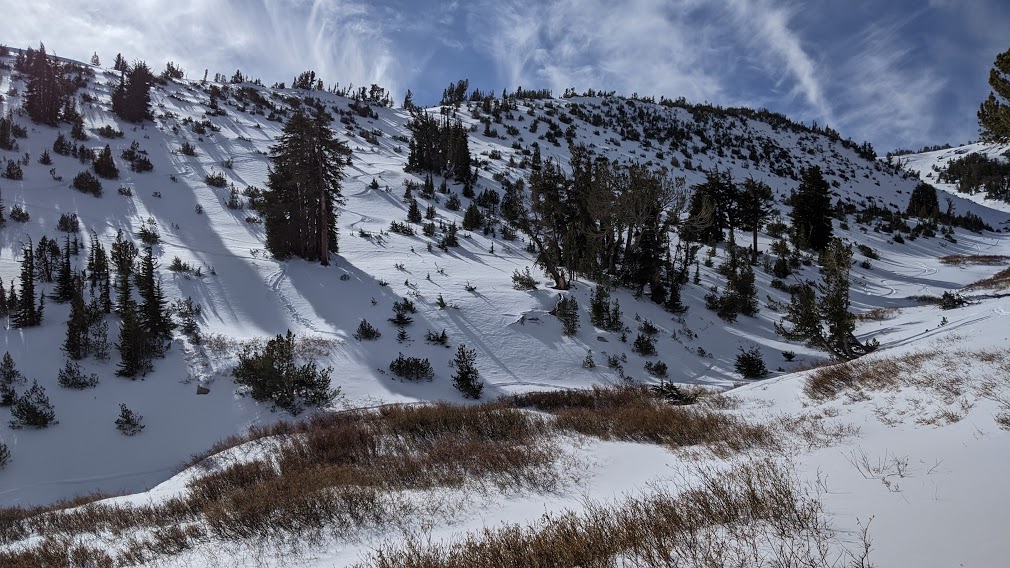| Saturday | Saturday Night | Sunday | |
|---|---|---|---|
| Weather: | Sunny. Snow levels below 7000 feet increasing to 7000 feet in the afternoon. Chance of precipitation is 0%. | Partly cloudy. Snow levels below 7000 feet. Chance of precipitation is 0%. | Sunny. Snow levels below 7000 feet. Chance of precipitation is 0%. |
| Temperatures: | 38 to 43 deg. F. | 22 to 28 deg. F. | 42 to 47 deg. F. |
| Mid Slope Winds: | Light winds. | Light winds. | Light winds. |
| Expected snowfall: | No accumulation. | SWE = none. | No accumulation. | SWE = none. | No accumulation. | SWE = none. |
| Saturday | Saturday Night | Sunday | |
|---|---|---|---|
| Weather: | Sunny. Snow levels below 7000 feet increasing to 7000 feet in the afternoon. Chance of precipitation is 0%. | Partly cloudy. Snow levels 7000 feet. Chance of precipitation is 0%. | Sunny. Snow levels below 7000 feet. Chance of precipitation is 0%. |
| Temperatures: | 36 to 42 deg. F. | 22 to 28 deg. F. | 38 to 44 deg. F. |
| Ridge Top Winds: | Light winds. | Light winds becoming southwest around 15 mph with gusts to 35 mph after midnight. | Southwest around 15 mph with gusts to 35 mph. |
| Expected snowfall: | No accumulation. | SWE = none. | No accumulation. | SWE = none. | No accumulation. | SWE = none. |
























